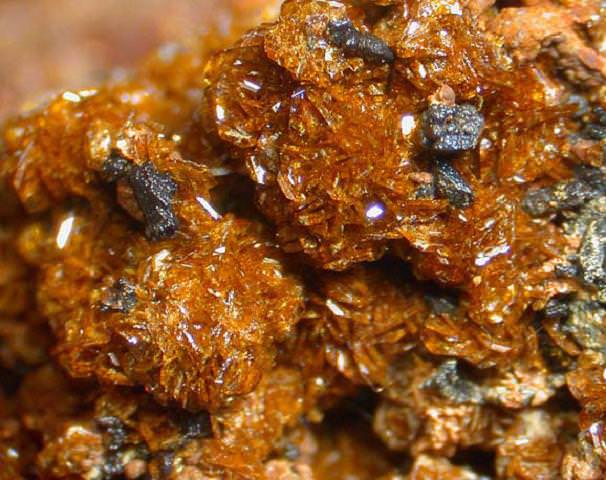[/caption]
No. This isn’t an ancient raisin sponge cake you found at the back of your breadbox. It’s a closeup of a rare mineral called jarosite… a hydrated iron sulfate composite which takes on some very specific properties when it is exposed to a wet environment. It was discovered here on Earth in 1852 in ravines in the mountainous coast of southeastern Spain – and it turned up on Mars at a rocky outcropping, dubbed El Capitan, in the crater at Meridiani Planum where Opportunity landed. What makes this ruddy, crystalline structure so exciting is that it can “date” when liquid water may have existed.
If you thought jarosite looked like a left-over, then your assumption is close to correct. It’s actually a byproduct of the weathering of exposed rocks and forms when the right equation of oxygen, iron, sulfur, potassium and water are mixed.
In a recent study published in an October (v. 310) issue of Earth and Planetary Science Letters, Suzanne Baldwin, professor of Earth Sciences in SU’s College of Arts and Sciences; and Joseph Kula, research associate and corresponding author for the study, established the “diffusion parameters” for argon in jarosite. From this, the crystalline structure then produces the noble gas, argon, when certain potassium isotopes in the crystals decay. Like carbon, this potassium decay rate is a radioactive process which has an established rate. By measuring the argon, scientists can then get a close determination on the age when the mineral interacted with liquid water. This bit of information could some day aid scientists in determining Mars’ water history when samples are returned.
“Our experiments indicate that over billion-year timescales and at surface temperatures of 20 degrees Celsius (68 degrees Fahrenheit) or colder, jarosite will preserve the amount of argon that has accumulated since the crystal formed,” Kula says, “which simply means that jarosite is a good marker for measuring the amount of time that has passed since water was present on Mars.”
Since water is critical for most life forms, knowing when, where and how long water might have existed on Mars will help clue us in to potential habitable sites. “Jarosite requires water for its formation, but dry conditions for its preservation,” Baldwin says. “We’d like to know when water formed on the surface of Mars and how long it was there. Studying jarosite may help answer some of these questions.”
But using argon as a “time clock” can still have some potential drawbacks. When exposed to temperature extremes, it is possible for some gas to escape the crystals. To help determine the validity of their hypothesis, the team is currently subjecting jarosite and its argon content to a battery of computer simulations. Fortunately, they have found it to exist over a wide range of conditions – those of which could very well have been a part of Martian history.
“Our results suggest that 4 billion-year-old jarosite will preserve its argon and, along with it, a record of the climate conditions that existed at the time it formed,” Baldwin says. The scientists haven’t stopped their studies yet, and they are conducting further experiments on jarosite that formed less than 50 million years ago in the Big Horn Basin in Wyoming. Through this research they hope to determine the timeline in which the minerals formed and how quickly environmental conditions changed from wet to dry. “The results can be used as a context for interpreting findings on other planets.”
Original Story Source: EurkAlert News Release.


Yo Tammy, there’s a typo in the image caption: “ther”.
It’s Middle English, must be taking a course.
Worst yet, when confusing “Greece” and “mountainous coast of southeastern Spain” !!!